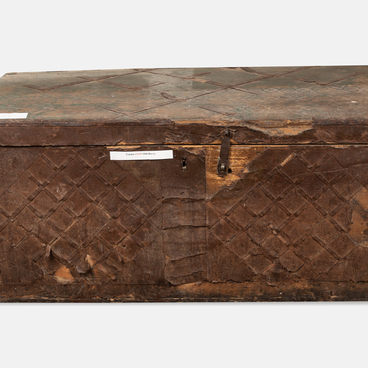The gymnastyorka tunic of Lieutenant of Medical Corps Mariya Nikolayevna Morozova (Zherebtsova) is one of the museum’s most prominent exhibits.
Mariya Morozova started out as a second lieutenant. The former midwife became a head nurse at the 15th medical battalion of the 191st infantry division of the 2nd Army. Her battle route lasted five years as she traveled from the vicinity of the besieged Leningrad in July 1941 to the victory in Berlin in May 1945. She was wearing this gymnastyorka tunic when she heard the news of the Great Victory.
“Risking her own life on the front line, Comrade Zherebtsova selflessly worked to provide medical aid to the wounded…” Mariya Morozova’s feats were recognized with many awards, including the medal “For the Defense of Leningrad”, the Order of the Red Star, and the Order of the Great Patriotic War, 2nd class. In the museum’s collection, the tunic is accompanied by a military nurse’s bag that was produced later. In real combat conditions, this valuable life-saving object looked more mundane, and its contents were not always sufficient. It is no secret that Wehrmacht soldiers were typically better equipped than Soviet ones. The same was true of military physicians. During the most intense battles in the early years of the war, medications and medical devices were extremely scarce. After the Soviet army turned the war around, it started using the items captured from the enemy, in particular, from enemy hospitals, including operating scissors, forceps, vials, and containers of alcohol and disinfectants such as manganese. One of the important items was a silver nitrate stick. It was used to disinfect and to sear bullet wounds. Sometimes, when a lot of wounded arrived at the same time, they were marked with this stick.
Many medical officers died while carrying the
wounded away from the battlefield, protecting them from shell fragments at the
expense of their own lives. They remained at the surgery tables throughout
artillery attacks and air raids. Soviet doctors helped over 70% of the wounded
return to service, which ensured a large number of battle-seasoned, experienced
soldiers and officers. Major efforts were undertaken to prevent epidemics —
both among the civilian population and at the front line. Scientific research
never stopped either. Throughout the war, medical literature continued to be
published, and physicians were trained right at the front line.


